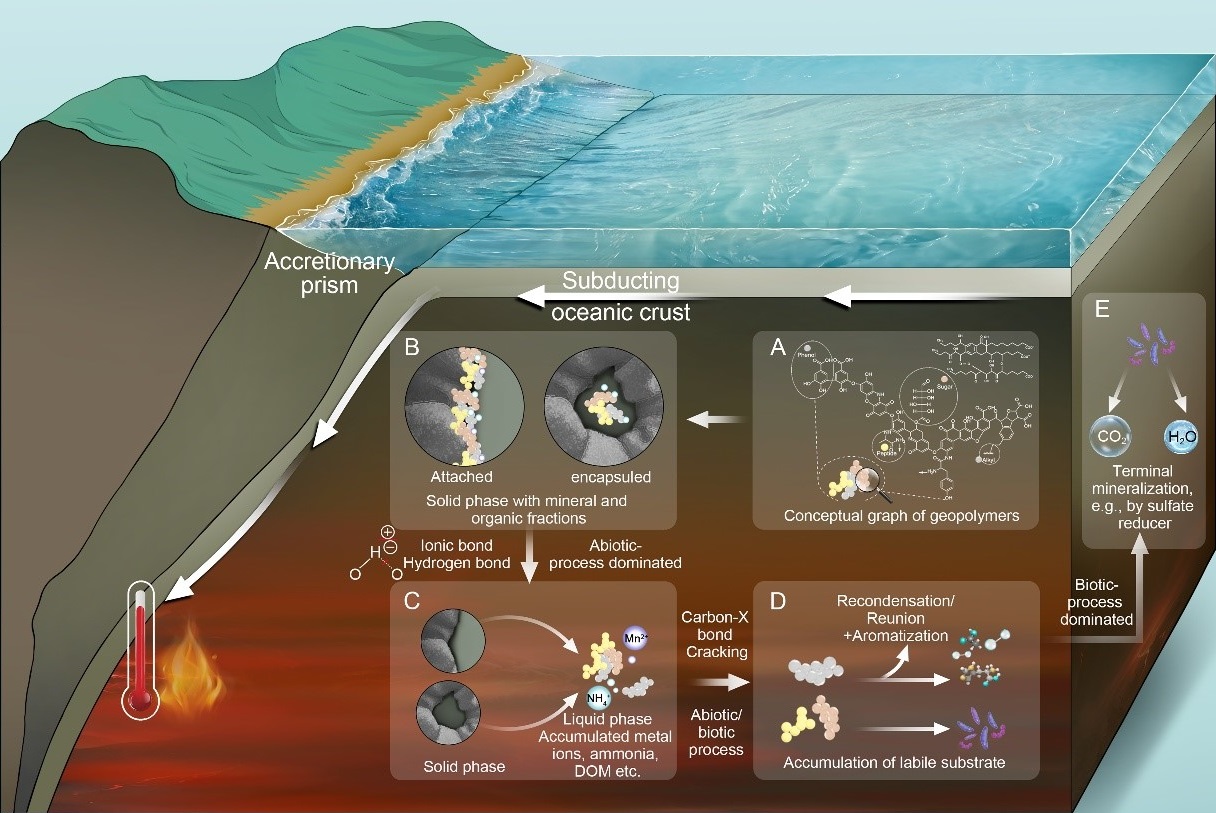Secrets of the Deep: How Heat Awakens Ancient Ocean Carbon—A Reverse Microbial Carbon Pump?
Deep beneath the ocean lies Earth’s largest carbon reservoir: marine sediments that have been accumulating organic matter for millions of years. Long thought to be permanently “locked away,” this vast carbon pool is now revealed to be more dynamic than expected.
A team from the Chinese Academy of Sciences, together with international collaborators, has discovered that heat can “awaken” this ancient carbon, transforming it into food for microbes dwelling far below the seafloor. Their findings, published in Science Advances on August 20, reshape this understanding of life in extreme environments and the deep Earth’s carbon cycle.
Heated sediments above 40 °C account for nearly half of global marine sediment volume, yet the processes sustaining microbial life under such conditions have remained unclear. Previous study (Heuer et al., Science, 2020) by Dr. Verena Heuer, a coauthor of this research, showed how microbial populations persist in a ~1.2-km-deep, geothermally heated sediment sequence, yet the source of their energy-rich substrates was unresolved. This new study sheds light on the mechanisms that supply organic matter to these hidden ecosystems.
The team analyzed 7.8-million-year-old sediments from the Shikoku Basin in the Pacific Ocean. Using state-of-the-art analytical techniques, they proposed a model demonstrating how the interplay of biological and abiotic processes converts refractory organic matter into bioavailable forms. Remarkably, the model resembles an inversion of carbon sequestration mechanisms observed at Earth’s surface. Specifically, a “reversal” of the mineral carbon pump appears above 35 °C, while a microbial carbon pump-like inversion emerges above 55 °C. As Prof. Shuchai Gan (corresponding author) explains: “These slow processes act like a reverse microbial carbon pump—normally a mechanism that stabilizes carbon at Earth’s surface—yet here the heat reactivates carbon that is millions of years old.” At 85 °C, these processes accelerate, producing simple compounds that fuel microbes, meanwhile the biological degradation chains tend to break down. Abiotic process reconstructs the common organic matter–based microbial consortia in anaerobic environments and facilitates the final steps of mineralization. Even only about 0.25% of organic carbon becomes bioavailable, the scale of the reservoir (15,000,000 Gt vs. 39000 Gt of entire oceanic water column) ensures substantial energy to maintain extensive subsurface ecosystems—the deep biosphere.
This research, jointly conducted by the group led by Prof. WANG Faming (South China Botanical Garden, Chinese Academy of Sciences), University of Bremen, and Harvard University, uncovers a fundamental mechanism of deep carbon cycling. It reminds us that the Earth holds extraordinary secrets in its inaccessible environments, life thrives in ways that reshape understanding of the deep Earth’s carbon cycle. Paper Link: https://www.science.org/doi/10.1126/sciadv.adw8638

Figure. Coupling of abiotic and biotic processes in heated subseafloor. (image by WANG et al)
File Download: